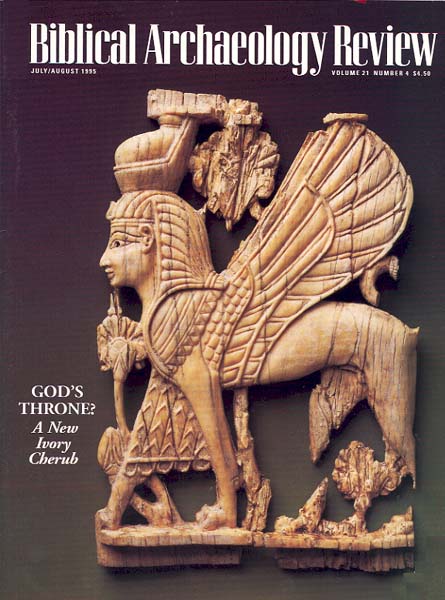Image Details

David Harris/Bible Lands Museum, Jerusalem
ON THE COVER: Magnificently modeled in ivory, this 5-inch-high plaque, dating to the ninth or eighth century B.C.E., depicts a winged creature with an exquisite human face. Such composite creatures, like the Egyptian sphinx, were common in the ancient Near East and were often associated with divinity. In “Cherubim: God’s Throne?” Elie Borowski identifies this ivory as a cherub—probably from Arslan Tash in northern Syria—described by the prophet Ezekiel as combining characteristics of lions, bulls and eagles (Ezekiel 1:10). Mentioned more than 90 times in the Hebrew Bible, cherubim guard the gates of Eden after Adam and Eve’s departure (Genesis 3:24) and adorn the Holy of Holies in the Temple (1 Kings 6:27). Early in the Christian era, according to Robin Jensen in “Of Cherubim and Gospel Symbols,” these four elements (man, lion, bull, eagle) became the symbols of the four evangelists.
